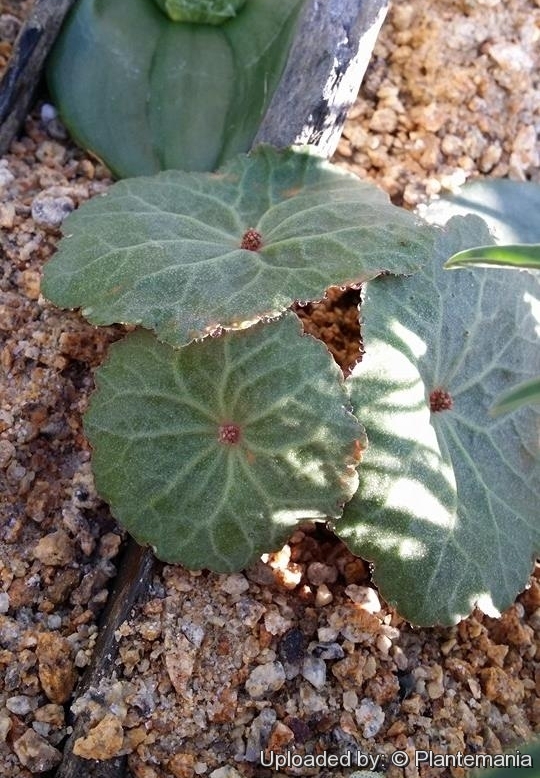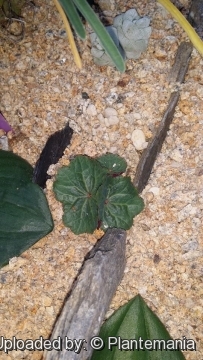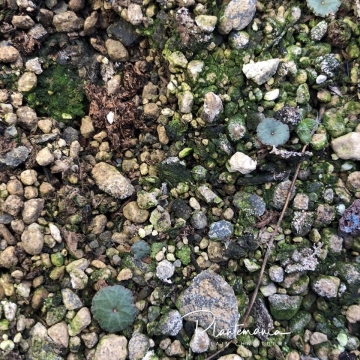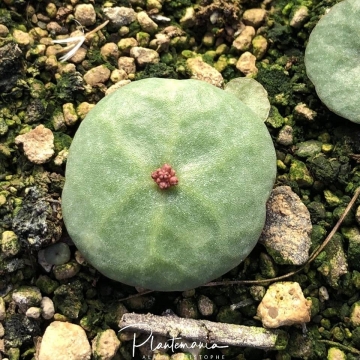
Crassula umbellata Photo by: © Plantemania
The largest succulent plant in the world is the baobab (Adansonia digitata) and the smallest is Crassula umbellata.
Origin and Habitat: Republic of South Africa (south-western Cape Province from near Williston to the Cape Peninsula but mainly on the eastern side of the mountains where the distribution area extends into the southern Great Karoo and the Little Karoo)
Habitat and ecology: Succulent Karoo, Fynbos. Crassula umbellataSN|33482]]SN|33482]] often grows in great numbers in sandy soils or on gravelly slopes but rarely in shaded positions, it flowers in spring. Plants growing in exposed positions often form an almost flat disc, but if conditions change subsequently, the younger internodes will elongate. Crassula umbellataSN|33482]]SN|33482]] is a therophyte, a plant that survives unfavourable seasons in the form of seeds only.
Synonyms:
See all synonyms of Crassula umbellata
back
Accepted name in llifle Database:Crassula umbellata Thunb.Prodr. Pl. Cap. 54 1794.Synonymy: 8
back
Common Names include:
ENGLISH: stonecrop
Description: Crassula umbellataSN|33482]]SN|33482]] is an erect dwarf green to reddish annual succulent, with spreading branches 20-40 mm long, usually appressed to the ground (only 2-6 mm high) but elongating after rains to 3 cm tall. Glabrous throughout. The cup-shaped cream to pinkish flowers are minuscule.
Roots: fibrous.
Stems. This species produces spreading branches 20-40 mm long, but sometimes nearly stemless with internodes not elongating.
Leaves: 2-3.5(-4) mm long, 1.5-2.5(-4) mm wide, spatulate, rhombic, triangular to obovate, sessile, subsessile or shortly petiolate to 2 mm obtuse, abruptly constricted towards the base, covered with papillae on upper surface and often convex above, green to reddish brown. Upper leaves crowded in a rosette below the infloresce.
Inflorescences: Thyrses with (usually) a single dichasium. Pedicel 3 - 10(-15) mm long.
Flowers: 4-merous, sessile at first and pedicel elongating when fruiting. Calix lobes oblong, 0.7-1 mm long, fleshy, green to brown. Corolla cup-shaped, cream tinged red, lobes ovate, to 1 mm bluntly acute, erect to somewhat recurved. Stamens oblong-cuneate, 0,3-0,4 x 0,1-0,2 mm, truncate or rounded, gradually constricted downwards, almost membraus, white. Anthers yellow.
Blooming season (in habitat): July-October.
Seeds 6-8, released through apical pore of follicles.
Bibliography: Major references and further lectures
1) J.P. Roux “Flora of South Africa”, 2003
2) Urs Eggli “Illustrated Handbook of Succulent Plants: Crassulaceae” Springer Berlin Heidelberg, 05/Nov/2012
3) 3) “Crassula umbellata Thunb”. - Photo Guide to Plants of Southern Africa retrieved 3 Jan 2017 from: http://www.southernafricanplants.net/plantdata_sub.php?Mspec_ID=1578
4) "therophyte." Wiktionary, The Free Dictionary. 25 Jul 2016, 17:25 UTC. 3 Jan 2017, 11:15 <https://en.wiktionary.org/w/index.php?title=therophyte&oldid=39286878>.
 Crassula umbellata Photo by: © Plantemania
Crassula umbellata Photo by: © Plantemania Crassula umbellata Photo by: © Plantemania
Crassula umbellata Photo by: © Plantemania Crassula umbellata Photo by: © Plantemania
Crassula umbellata Photo by: © PlantemaniaSend a photo of this plant.The gallery now contains thousands of pictures, however it is possible to do even more. We are, of course, seeking photos of species not yet shown in the gallery but not only that, we are also looking for better pictures than those already present.
Read More... Cultivation and Propagation: Needs excellent drainage in pots.














